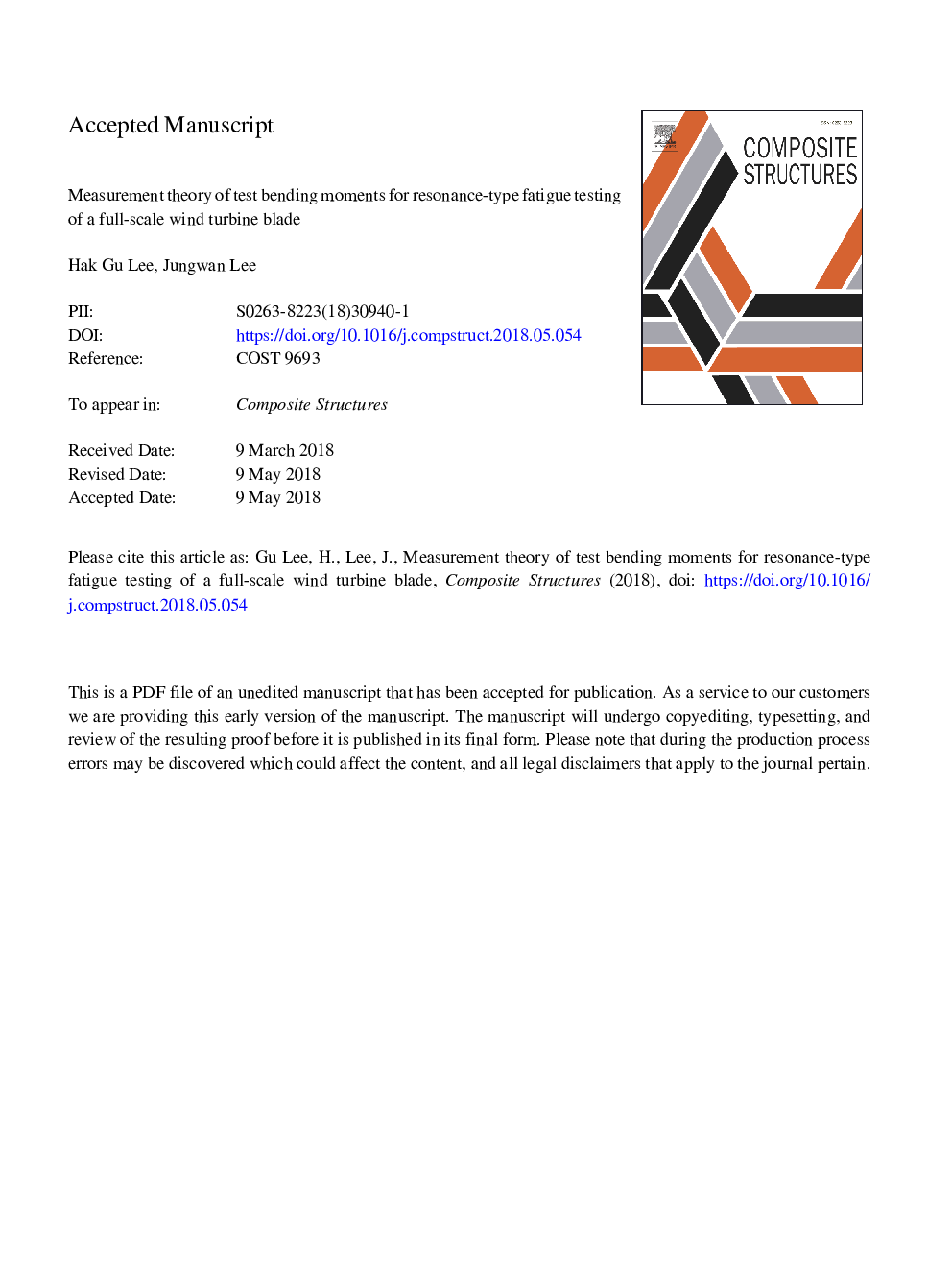| Article ID | Journal | Published Year | Pages | File Type |
|---|---|---|---|---|
| 6703058 | Composite Structures | 2018 | 27 Pages |
Abstract
To date, the predominant number of accidents in wind farms has been due to blade failure; a failure rate of 1:184 per year. To prevent this frequent failure, the fatigue life of a wind turbine blade should be evaluated accurately. Fatigue testing of a wind turbine blade larger than several tens of meters in length exploits resonance that causes nonsymmetrical bending of the blade. However, a conventional approach for measuring test bending moments has brought about large deviations between the measured results, with the maximum deviation generally being between 10% and 15% as a rule of thumb. This study developed a measurement theory of test bending moments for resonance-type fatigue testing of a wind turbine blade. The theory can handle biaxial test bending moments that occur during single-axial fatigue testing, reducing the deviations between the measured results by about 1/5 for the flapwise fatigue test and by about 4/7 for the lead-lag fatigue test of a 3â¯MW wind turbine blade 59.5â¯m in length. This study makes a significant step forward in alleviating blade failure in wind farms by the accurate evaluation of a blade's fatigue life in design.
Related Topics
Physical Sciences and Engineering
Engineering
Civil and Structural Engineering
Authors
Hak Gu Lee, Jungwan Lee,
